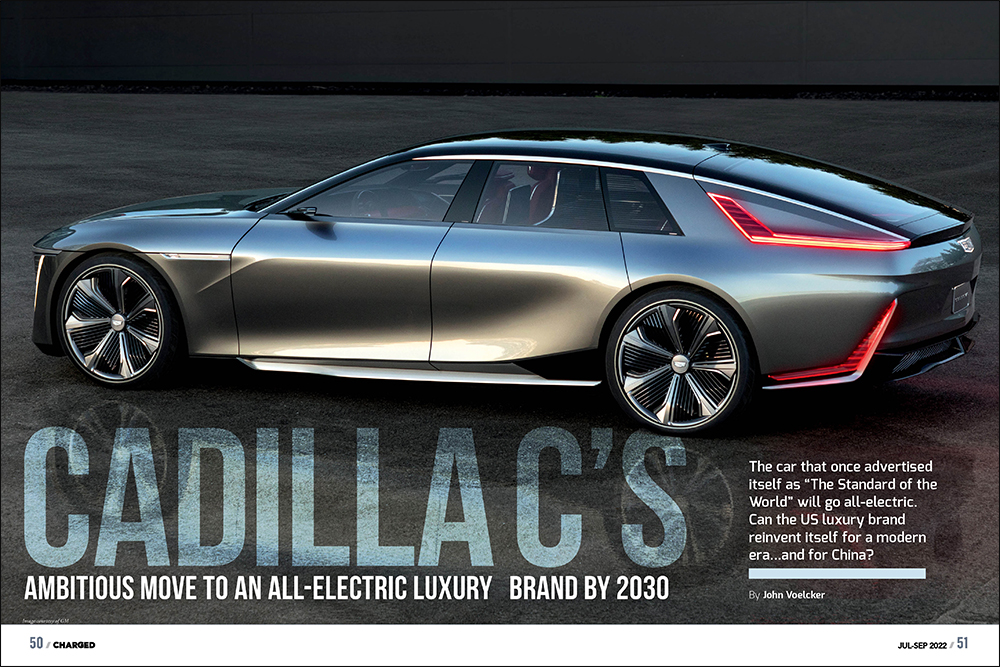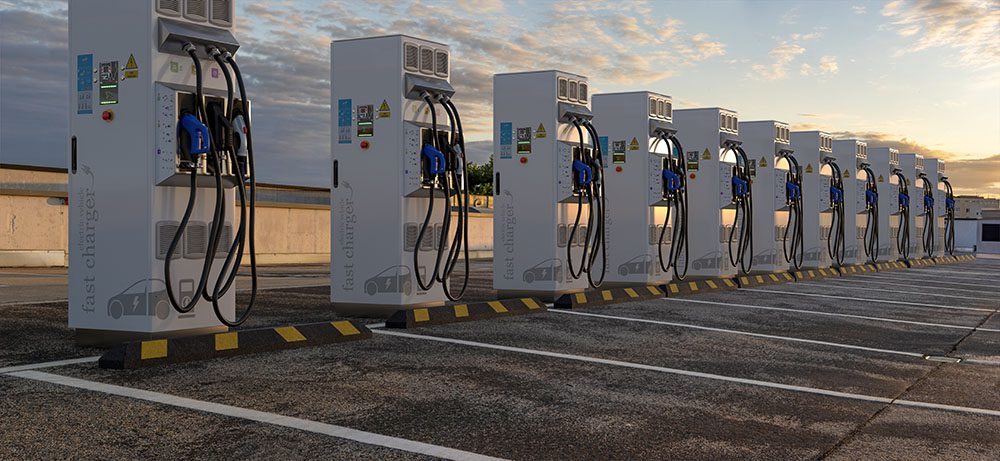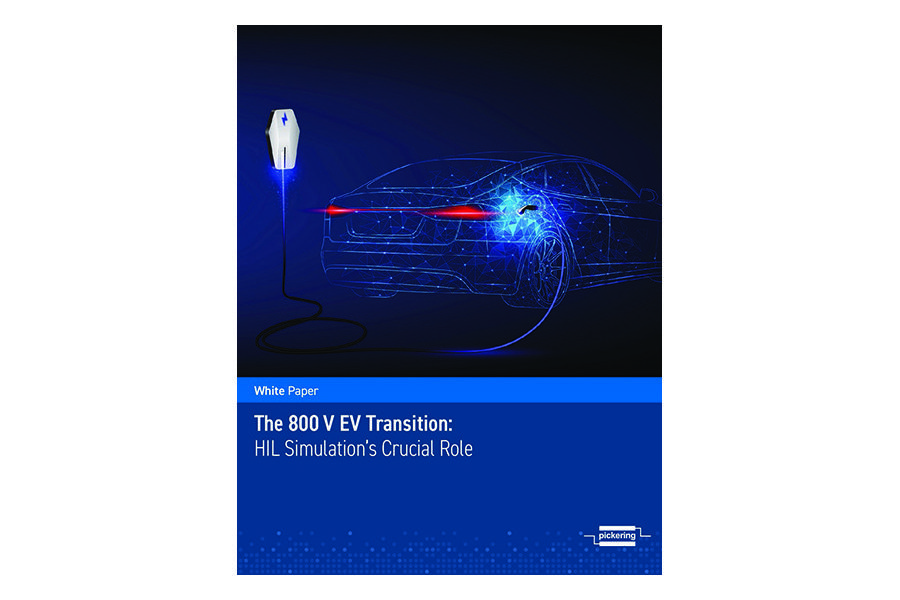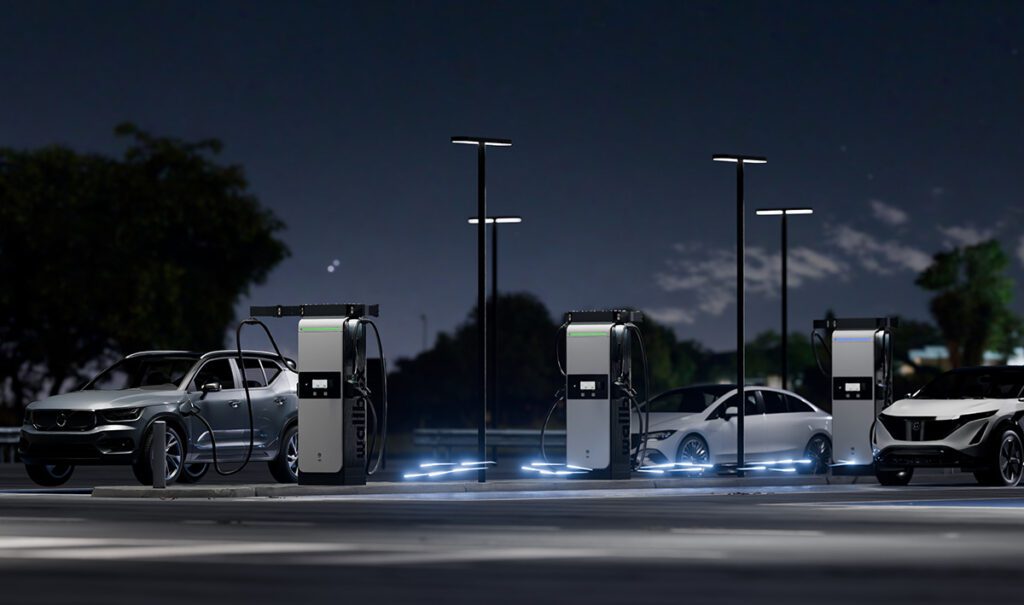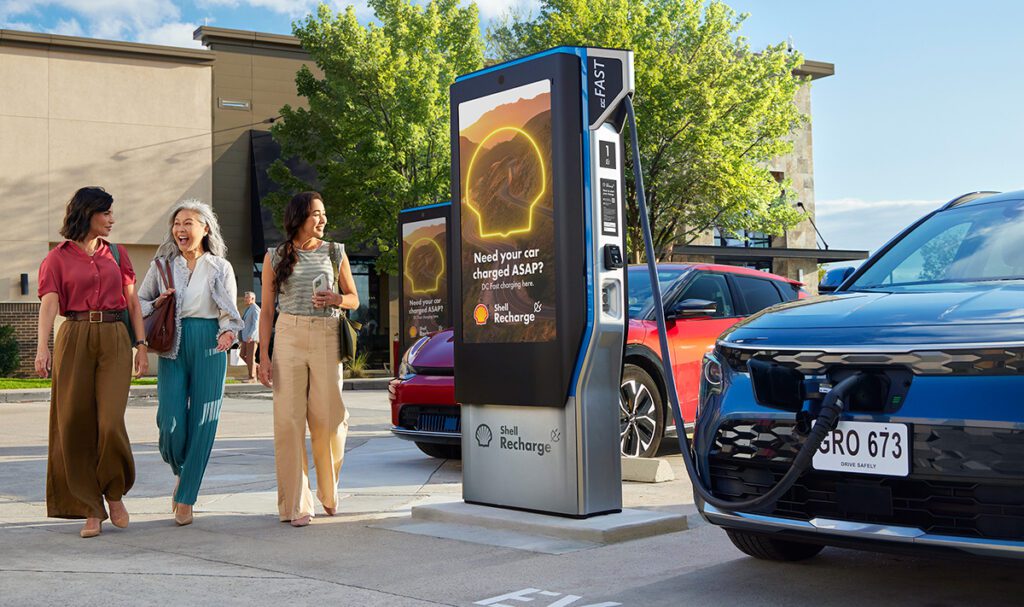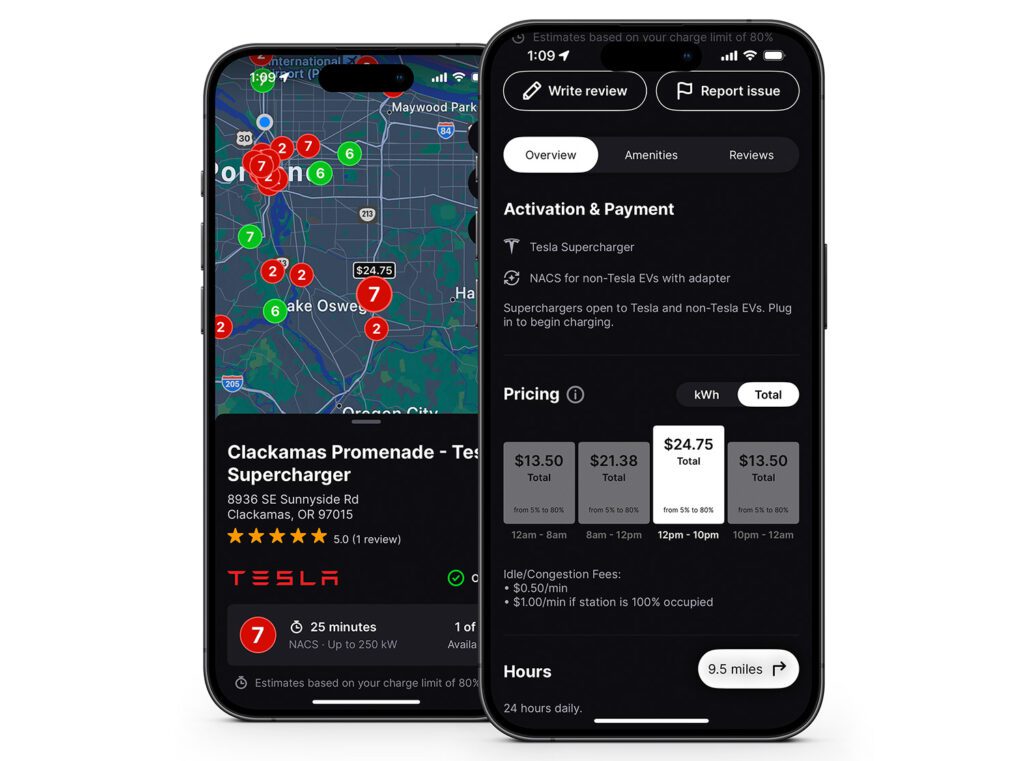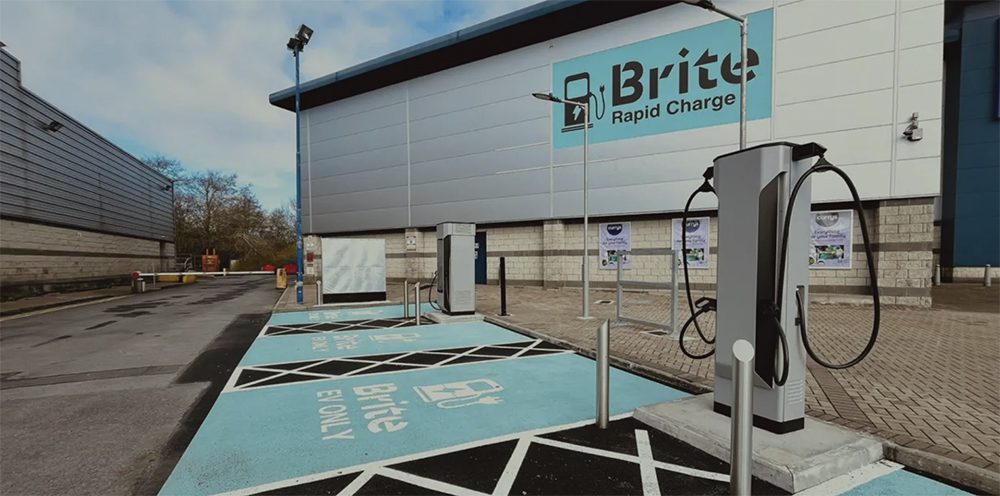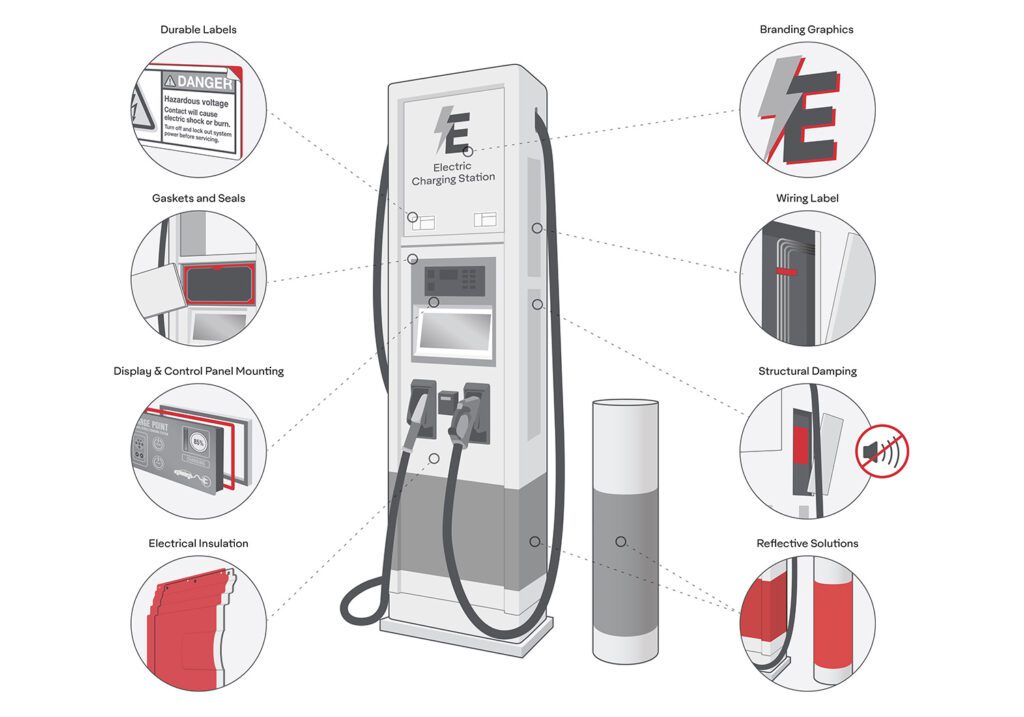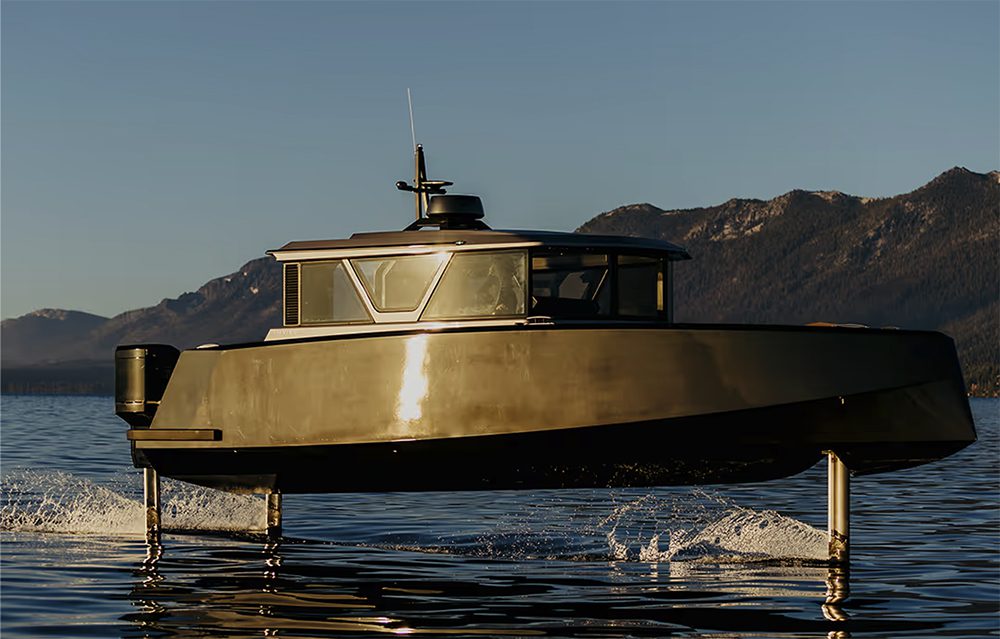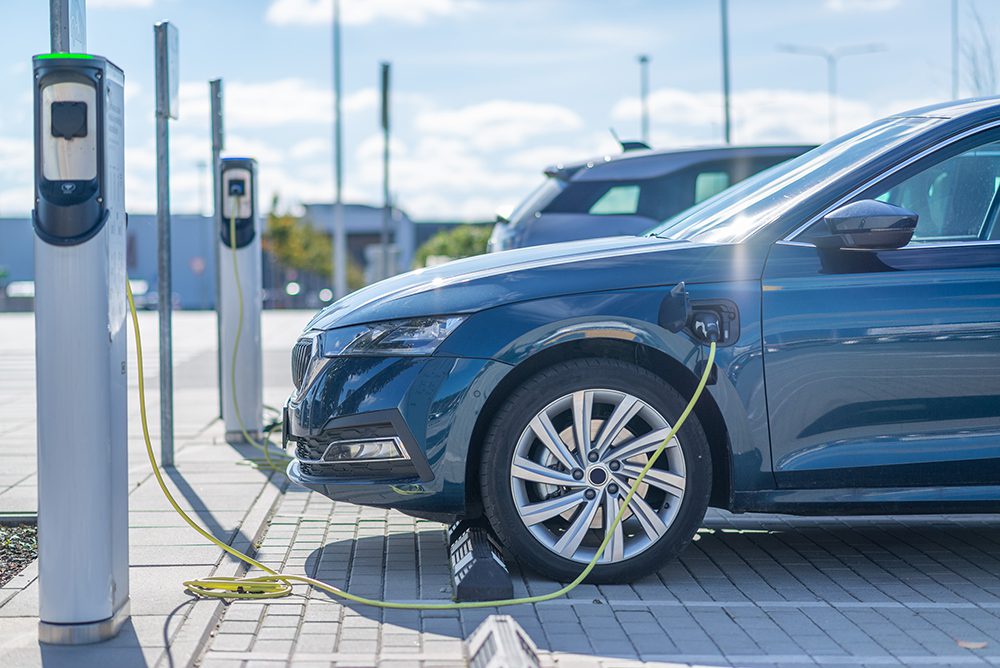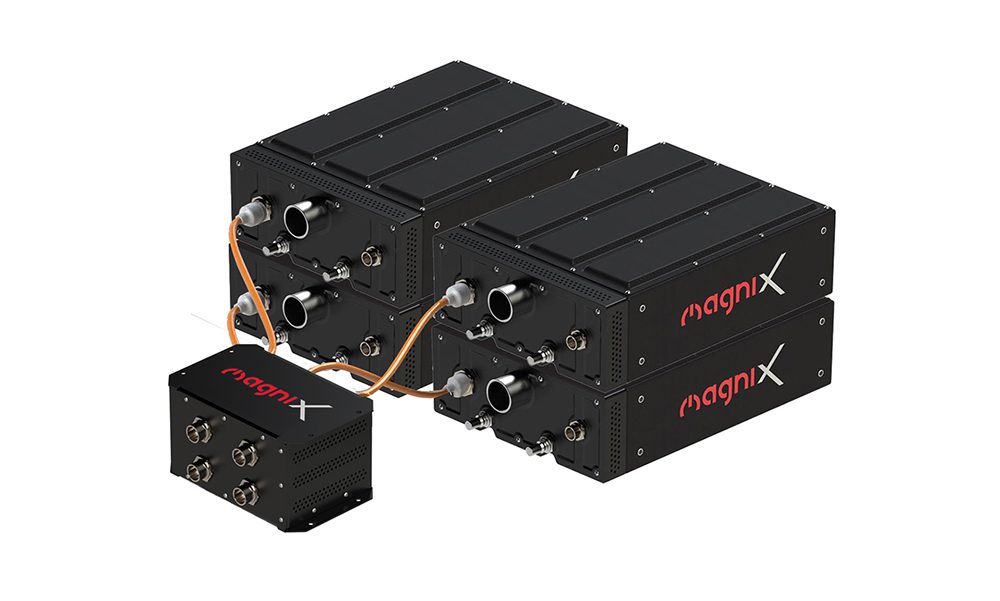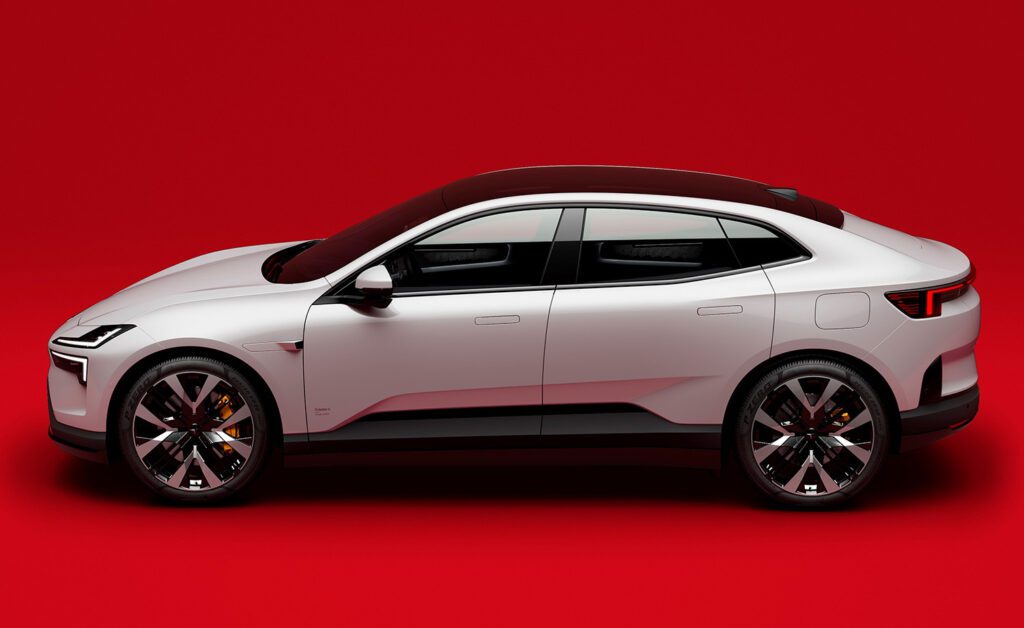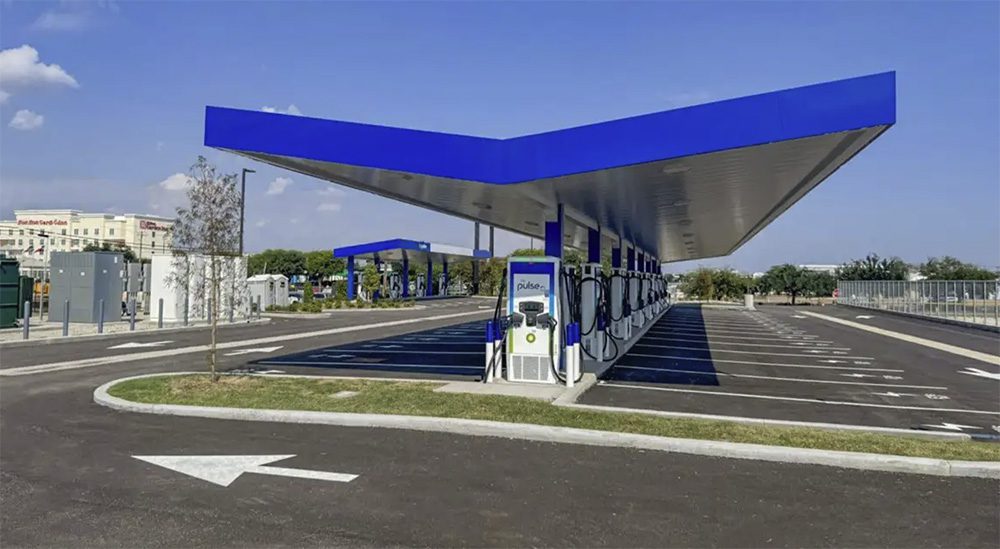The car that once advertised itself as “The Standard of the World” will go all-electric. Can the US luxury brand reinvent itself for a modern era…and for China?
Among cutting-edge automotive buyers—the glitterati of Los Angeles, the tech millionaires of Silicon Valley, the finance titans of Wall Street—only one Cadillac is widely recognized. It’s a truck, specifically the Escalade SUV, the gussied-up, very successful ultra-luxury version of the Chevy Suburban.
Almost 19 feet long, almost 3 tons in curb weight, the Escalade ESV (most often in black) is a staple of affluent driveways and high-end car services across the country. It seems about as relevant to the electric-vehicle transition as a Caterpillar excavator.
Yet Cadillac is leading the high end of General Motors’ ambitious move into EVs for all its brands. It’ll never sell in the numbers Chevrolet will, but GM has said Cadillac’s lineup will be all-electric by 2030—only one full product cycle away. It’s the first of GM’s brands to dispense with internal combustion engines. In part, this is because Cadillac is hugely important for GM’s continuing presence in China, a market that gets more challenging for the US carmaker every year.
GM has said Cadillac’s lineup will be all-electric by 2030—only one full product cycle away.
Lyriq launch pulled ahead
The model intended to put US shoppers on notice that Cadillac now offers EVs is the 2023 Lyriq, a mid-size five-seat crossover utility vehicle with an estimated range of up to 312 miles. (The EPA hasn’t yet released its official rating.) It offers a far more elegant interior than Cadillac’s similarly sized XT6 crossover, and the starting price is just above $60,000, though most will likely sell for $10,000 to $20,000 more, given the array of options and available features.
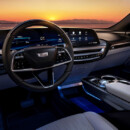
The degree of technology in the car should delight tech aficionados getting tired of their Teslas, with the added benefit that Cadillac has retained hard buttons for some of the most frequently used controls. Unlike in the Rivian, passengers can adjust the air vents manually, rather than having to go through multiple menu levels. Tech features include a syncopated “light show” using the entire front end for a display as a user (er, driver) approaches the Lyriq; a 33-inch curved display facing the driver; and seat adjustment levers mounted on the door, Mercedes-style.
The 2023 Lyriq isn’t initially available with all-wheel drive, though that option will arrive late this year. Its battery capacity is rated at 102 kilowatt-hours, and for early models, a single electric motor estimated at 250 kilowatts (340 horsepower) powers the rear wheels. The rear seats of the Lyriq are spacious—which should help with child-hauling duties in affluent suburbs—though the middle rear seat is the short straw among the three positions.
Production of 2023 Lyriqs is entirely sold out. Orders for the 2024 models will open up during autumn 2022, for deliveries starting in 2023.
Cadillac was able to pull the US launch of the Lyriq ahead by nine months—early production units were built in March at its assembly plant in Spring Hill, Tennessee, and the first customer deliveries took place in June. It’s worth noting that production of 2023 Lyriqs is entirely sold out. Orders for the 2024 models will open up during autumn 2022, for deliveries starting in 2023. Eager shoppers can put down a refundable $100 deposit for a “pre-order” that can be converted into an actual order then.
Limiting factor: battery supply
Production of any electric Cadillac models will remain low for the balance of 2022, due simply to limited availability of the new Ultium battery cells that power them. GM and its joint-venture cell partner LG Energy Solutions plan to build and equip a likely total of five cell production plants in North America, but the first of those—in Lordstown, Ohio—won’t start producing cells in the necessary volumes until the end of this year.
Meanwhile, cells for the small number of Ultium-based EVs GM builds this year, including not only the Cadillac Lyriq but the GMC Hummer EV, will come from a low-volume pilot production line set up at GM’s Tech Center in Warren, Michigan. (That leaves the small Chevrolet Bolt EV and Bolt EUV as the company’s only high-volume EVs this year—their batteries use an older LG Chem cell from established production lines.)
Ultimately, GM will build Ultium-based EVs in North America for its four existing brands (Cadillac, GMC, Buick and Chevrolet) plus one model each for Honda and Acura. They will be supplied by cell plants not only in Lordstown but also in Spring Hill, Tennessee; Lansing, Michigan; and likely two further locations to be announced.
The US Department of Energy will loan the company $2.5 billion to build those plants, it said in July, under its Advanced Technology Vehicle Manufacturing (ATVM) low-interest loan program. Dormant for a decade, that Obama-era program initially loaned money to Ford, Nissan, and Tesla (which all paid back their loans) and Fisker, which declared bankruptcy and lost the department more than $100 million.
Under the Inflation Reduction Act signed by President Joe Biden in mid-August, automakers will soon have to source increasing proportions of their battery components from North America in order to qualify for federal tax credits. The three GM-LG plants now under constructions should neatly meet those requirements.
Celestiq: a true Standard of the World?
In March 2020, just a week before the global Covid-19 pandemic began to shut down businesses and travel, GM held an “EV Day” in Michigan for invited auto media. No photos were allowed, but the company showed a dozen future EVs it said it intended to build. All but the pair of Chevy Bolt models were based on the new Ultium architecture.
Perhaps the most startling were two Cadillacs in addition to the Lyriq—since a midsize luxury electric SUV wasn’t a surprise even then. The first was a massive, square, Escalade-like three-row SUV (unnamed), about which we’ve heard nothing more since.
The other was a large, low, sleek fastback sedan called the Celestiq. Very long, very wide, the Celestiq is to serve as a new flagship and halo vehicle for GM’s global luxury brand. It will be hand-built, with a degree of customization Cadillac has never offered. According to GM Product Chief Mark Reuss, it will also be the first vehicle fitted with Ultra Cruise, GM’s next generation of autonomous driving system following its current hands-off Super Cruise highway system.
The Celestiq is to serve as a new flagship and halo vehicle for GM’s global luxury brand. It will be hand-built, with a degree of customization Cadillac has never offered.
In July, GM unveiled the Celestiq concept to the world—and confirmed very low-volume production to start in model year 2025. It features a 55-inch dashboard display that lets a front passenger view video content that’s not visible to the driver. There’s also a glass roof with four individual quadrants that each passenger can customize to let in more or less light, as they wish. The car will be hand-built at GM’s Global Technical Center starting late next year—in volumes of just 400 per year.
The Celestiq is an audacious bid to take Cadillac back into the highest end of the ultra-luxury vehicle market. It will be priced at $300,000 and above, putting it above top-end models from Audi, BMW, Lexus and Mercedes-Benz, and up against more rarified marques: Bentley, Rolls-Royce, and perhaps Mercedes-Maybach. The US brand hasn’t played in the highest end of luxury in many decades. Its hand-built Eldorado models of the late 1950s may have been the last truly ultra-luxury models it offered—and that was at least three generations of car shoppers ago.
The Celestiq is not a make-or-break car for Cadillac. You could view it as an experiment, a low-volume attempt to see whether the brand can reach customers for whom money is truly no impediment, but who value rarity, exclusivity and features found in no other vehicle driven by their peers.
China is a market where the brand has the advantage of novelty, and a chance to build a new image from the ground up.
China likely has more of those buyers than does North America, and they may be less resistant to a very, very high-end Cadillac. This is a market in which the brand has the advantage of novelty, and a chance to build a new image from the ground up, unencumbered by previous decades of missteps and multiple reinventions.
The China Syndrome
It’s China that may determine Cadillac’s future more than North America. The Lyriq is designed as much for that market as for US buyers. Deliveries of locally-built Lyriqs in China will start in late September or early October for the rear-wheel drive version, said Mike Albano, Executive Director of Cadillac Communications. The all-wheel-drive version will follow by the end of the year.
How important is China to Cadillac’s future? The brand’s best year in the US this century was 2005, when it sold 235,000 vehicles. But Cadillac sales in China surpassed those in its home market back in 2017, and the numbers have been steadily diverging ever since. That year, it sold 173,000 vehicles in China, versus 156,000 in the US.
From 2018 through 2021, the disparity between sales in the world’s two largest auto markets grew. In 2018, Cadillac sold 228,000 vehicles in China against 155,000 in the US. For 2019, it was 214,000 vs 156,000. In the two Covid years that followed, China sales were 231,000 and 233,000, versus 129,000 and 118,000 at home.
You can view the new electric Cadillacs as largely aimed at young, affluent, entrepreneurial Chinese buyers seeking the cachet of a Western luxury brand.
China is by far the most aggressive global market in promoting electric vehicles. It intends to capture the world’s biggest share of EV sales and EV battery production, and government policy is oriented toward that goal—just as it has already captured the world’s biggest share of solar photovoltaic cell production. In 2021, 31 percent of vehicles sold in China had plugs—versus 19 percent in Europe and just 5.2 percent in the US.
So, you can view the new electric Cadillacs as largely aimed at young, affluent, entrepreneurial Chinese buyers seeking the cachet of a Western luxury brand that differs from the same old German brands their friends drive. A couple of hundred ultra-pricey Celestiqs provide a halo effect to the Lyriq crossover they are more likely to end up buying. If, that is, all goes right for Cadillac in China—which is always an uncertain prospect.
Meanwhile, US consumers who can overlook Cadillac’s recent history will be offered some very advanced electric luxury cars—that aren’t the same old Teslas their friends drive. We look forward to driving them.
This article appeared in Issue 61: Jul-Sept 2022 – Subscribe now.







